#coptic art
Text
Coptic Women's Headpieces: padded headbands and Palmyran strips
Neither of these have much (...in the first case, any) information out there to make their own post about, but they're both interesting.

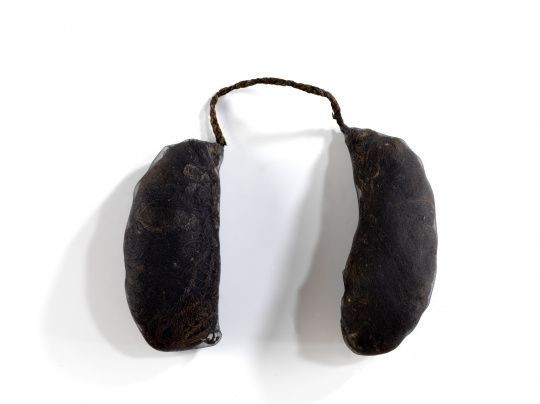
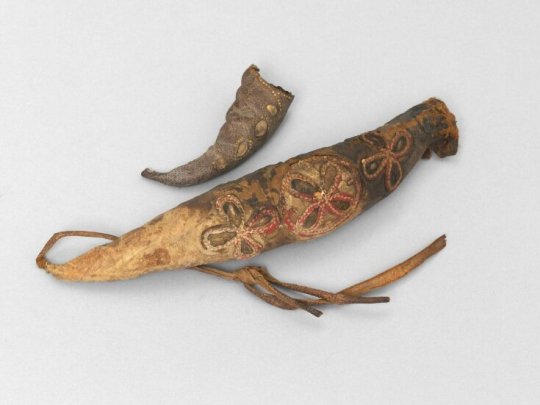

The first are these padded headpieces. In the past I'd only seen the one made of leather with flowers on it in the V&A, which notes its possible usage. However it was only until recently when I began poking around on the French internet when I found more, and better yet, an undeniable depiction of a woman wearing the headpiece. Before this I'd seen some depictions that may be the headpiece being worn, but usually seem much flatter than these were made to be or like they're a more standard gold diadem.
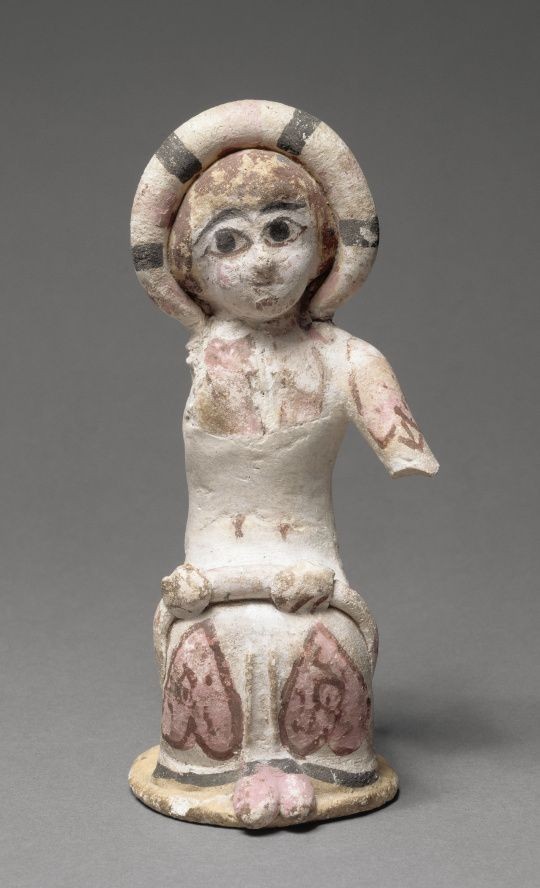
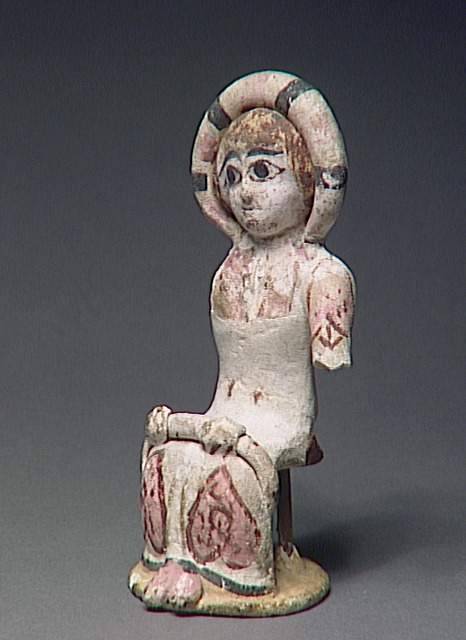
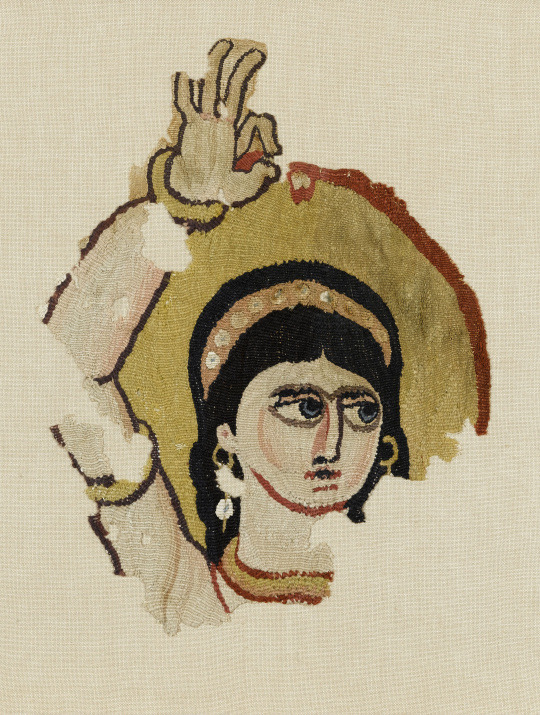
In addition to this, there are a few depictions of Coptic figures wearing these flower bud/petal crowns (more popular in the earlier part of Roman Egyptian art history), which makes me wonder if these were ever used as a base for those.


It's also possible this was out under the turbans worn by women in Coptic art. An example of a bust from Byzantine exists of a woman wearing a turban from Constantinople, and when viewed from the side it can be seen that the volume at the front of her headdress terminates in points near the nape of her neck/her ears. However, this bust also lacks the volume one would expect from the examples if a roll like the extant examples was used.
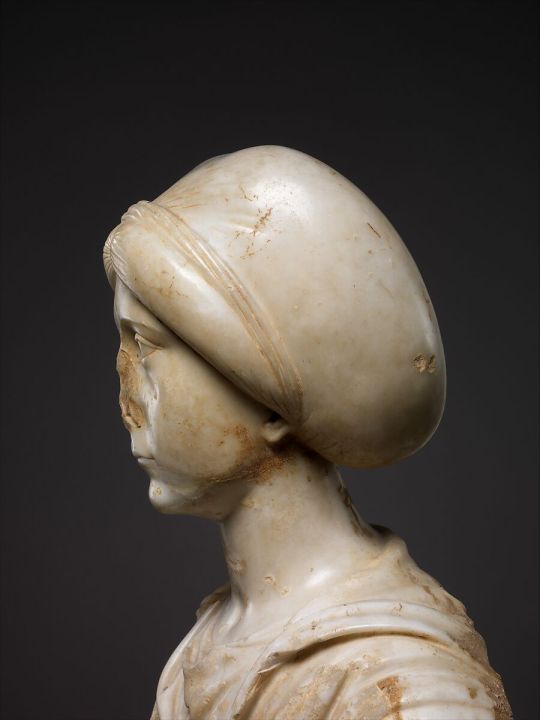
The other piece is one I noticed before, and isn't specific to Egypt, or originated from there. It seems to have come from Palmyra, and is fairly common in the funeral busts we have from there.

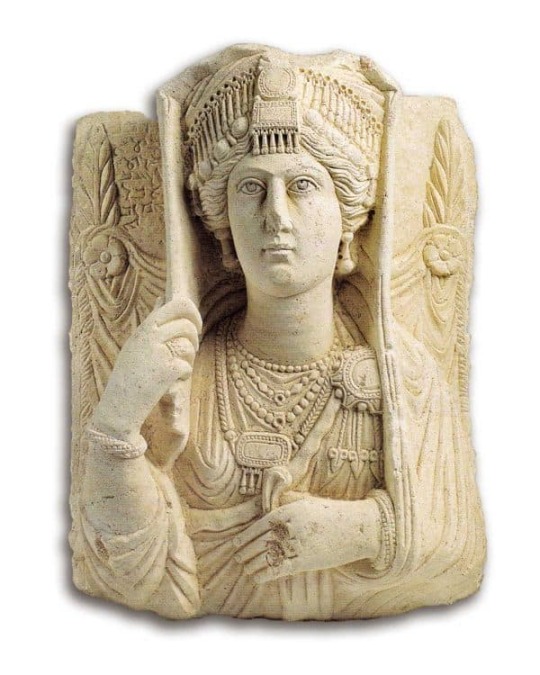
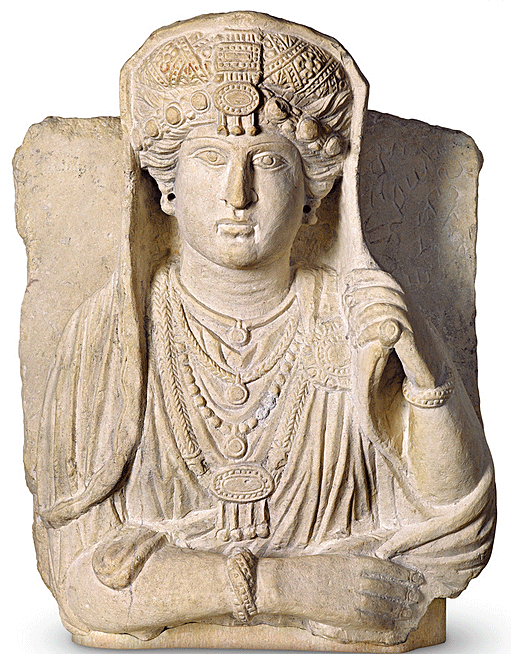
These are small plaques of metal and gems, typically with a few small beads dangling over the forehead. Currently it's supposed that they were attached to a woman's bun in some way.

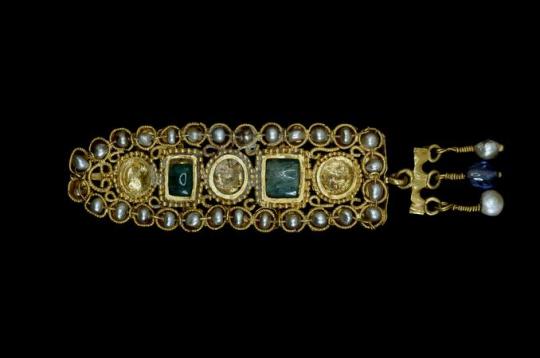
Here's a Roman-era Greek bust and a Roman- era Tunisian example.
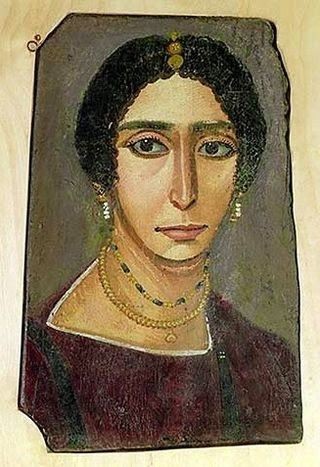
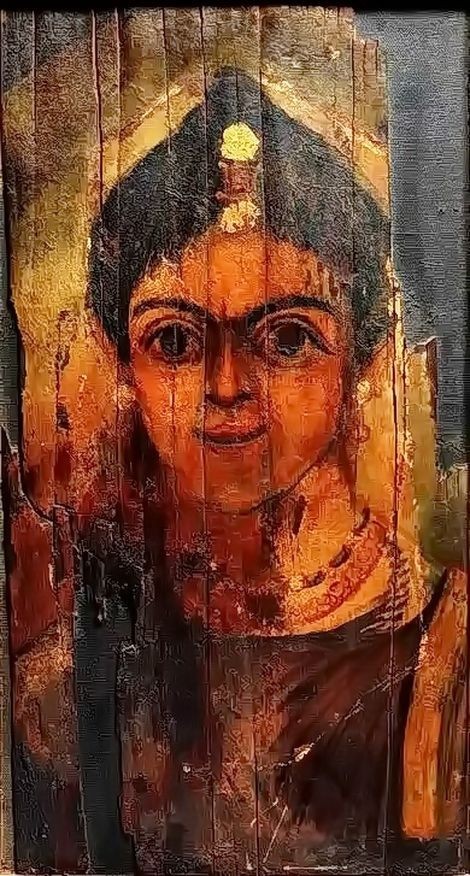



Heres some Roman-Egyptian portraits with similar head jewelry. So far, I haven't found a definitive later Coptic depiction of one being worn, but I don't think that means they stopped being worn before Christianization. It's possibly just a matter of what art has survived and what I've personally seen. Generally, Coptic jewelry is similar to the jewelry from earlier Roman-Egyptian examples, with some more unique examples and examples that were inspired by later trends in the Byzantine Empire.

One of the possible Coptic examples is from the tomb of Theodosea (full disclosure: Theodosea herself was Greek Christian living Egypt, not a Copt in the sense we mean it now, but she's dressed in a way generally common in Egypt at the time. I use "possible Coptic example" here to indicate the contemporary cultural majority of Egypt, which is distinct from the pre-Christian cultural identity of native Egyptians). Theodosea here is identified by Engy Hanna as wearing some type of golden hairnet, with a green pendant with 3 hanging pearls and two strings of hanging beads attached. Because of her palla, it's impossible to tell if she has only one medallion attached to her hairnet or if this is a strip. The overall composition of elements (a cover over the hair, the two strands, center ornament, and a shawl over top the head) are very similar to Palmyran headdresses, though she doesn't wear a turban or the patterned fillet they do.


Recently, I found a bust on an auction site labeled "Roman, probably made in Egypt" from the 1st century, with this ornament but made of a more pliable material- probably fabric. And another on the same site, maybe Egyptian (the information mentions both the terms Gandhara and Greco-Egyptian), with the more typical jeweled look, 2nd-3rd century (which is more into the swing of Christianization in Egypt).



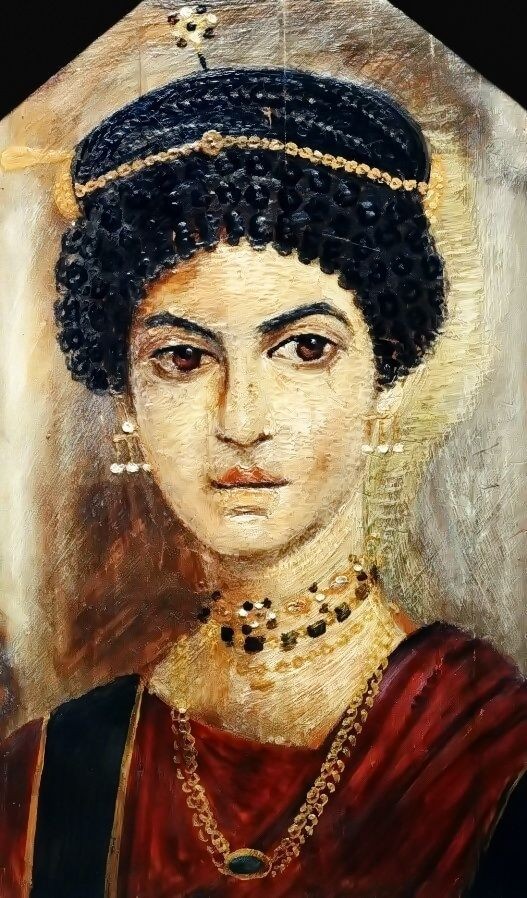

The last aside is another jewelry piece resembling that of Palmyra, though less so: a kind of circlet that appears to be made of chain with a center pendant. The star pendant worn by the second woman also notably resembles the pin holding the strip to the Greek girl's updo. The hanging strands of Theodosea are more blatant, but it's possible these were elaboration on the fashion. This style of jeweled forehead circlet, unlike the headband and strip (I have seen art of Syrian and Egyptian women with a strip, as well as Nubian art of women with a fillet/circlet and a center strip. The latter seems to be a more widely used item than the former two, which I have only seen one depiction each of so far), has remained consistently popular in West Asia and North Africa. Additionally the padded band worn by one of the Palmyran women featured here could be a related item to the padded headband; to know one would have to see the back of her head or find an artifact connecting the two. Even if a relationship can be proven between the Byzantine, Palmyran, and Coptic padded fillets, there is no clear indication of where it originated.
*I am a Copt, and if you are not, do not tag this post talking about "recreations". I find that offensive given the actions taken by Albert Gayet in regard to the clothes he took from graves. It is a simple boundary and you will not "enlighten" me to see how it's fine.*
Sources/Further reading:
https://art.rmngp.fr/fr/library/artworks/femme-assise_terre-cuite_polychromie-technique
https://art.rmngp.fr/fr/library/artworks/bourrelet-de-coiffure-postiches_laine-textile
https://art.rmngp.fr/fr/library/artworks/bourrelet-de-manteau_laine-textile
https://art.rmngp.fr/fr/library/artworks/bourrelet-de-mantelet_laine-textile_textile-matiere_lin-fibre | sources for 3 of the padded fillets and the figurine
https://collections.vam.ac.uk/item/O353014/pair-of-fillets-unknown/
https://www.metmuseum.org/art/collection/search/468716 | the marble bust
https://www.persee.fr/doc/bch_0007-4217_1969_num_93_2_4903 | in German, has photos of carvings with the hair ornament
https://www.sothebys.com/en/auctions/ecatalogue/2016/ancient-marbles-classical-sculpture-art-l16260/lot.59.html | carving of the short haired child
https://www.sothebys.com/en/buy/auction/2022/ancient-sculpture-and-works-of-art/a-roman-marble-portrait-head-of-a-girl-circa-2nd | carving of a girl with a jeweled strip, may be Egypt as the notes say an image of it was published in a work on Greco-Egyptian art and the girl has an "Isis lock" hairstyle
https://www.jstor.org/stable/4241695 | overview of Palmyran jewelry
https://www.britishmuseum.org/collection/object/G_1903-0717-3 | Tunisian example of strip
https://www.livius.org/pictures/greece/thessaloniki/thessaloniki-museum-pieces/thessaloniki-portrait-of-a-girl/
https://womenofegyptmag.com/2020/02/11/what-coptic-artefacts-tell-us-about-women-in-ancient-egypt-part-one/
#Coptic art#Coptic culture#Late Antiquity#Late Antique Egypt#Masr#Copt#Actually Egyptian tag#Cipher talk
90 notes
·
View notes
Text


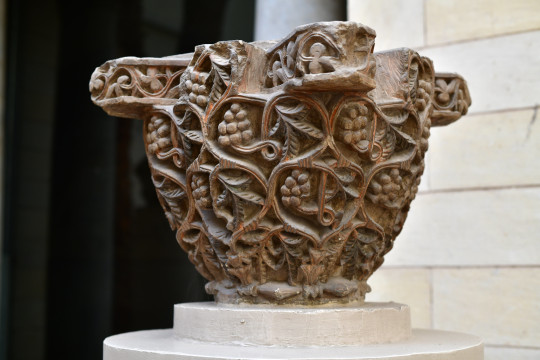
Coptic Cairo (2) (3) by Panegyrics of Granovetter
27 notes
·
View notes
Text
ϩⲁⲛⲣⲁⲛ ⲛ̀ⲧⲉ ϩⲁⲛⲧⲉⲃⲛⲱⲟⲩⲓ ⲛⲉⲙ ϩⲁⲛϩⲁⲗⲁϯ ϧⲉⲛ ϯⲙⲉⲧⲣⲉⲙⲛ̀ⲭⲏⲙⲓ
Names of animals and birds in Coptic









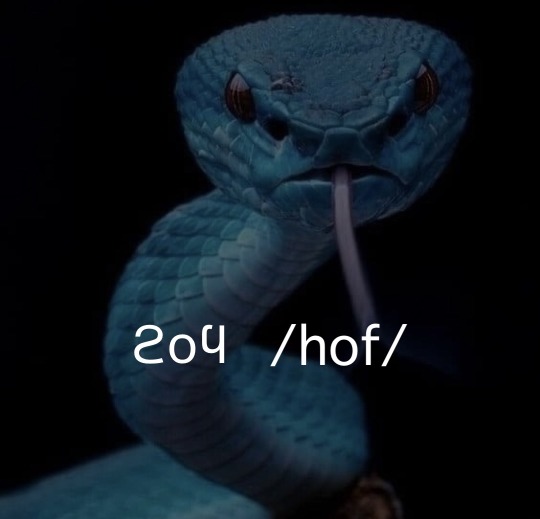
#coptic#egypt#kemet#ⲭⲏⲙⲓ#archeology#ancient egypt#egyptian#egyptian mythology#pharaonic art#pharaoh#africa#coptic language#languages#ancient languages#art#egyptian language#north africa#coptic art#history#kumat
87 notes
·
View notes
Text

Been delving back into traditional art lately, and practicing with alcohol markers.✨
#my art#art#furry#drawings#furries#anthro#furry art#anthropomorphic#drawing#traditional art#sketch#doodles#doodle#fursona#alcohol markers#Coptic markers#alcohol marker art
252 notes
·
View notes
Text

some of the other books I've bound so far
2K notes
·
View notes
Text
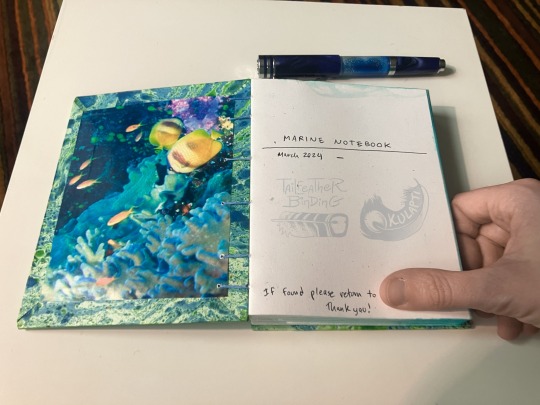


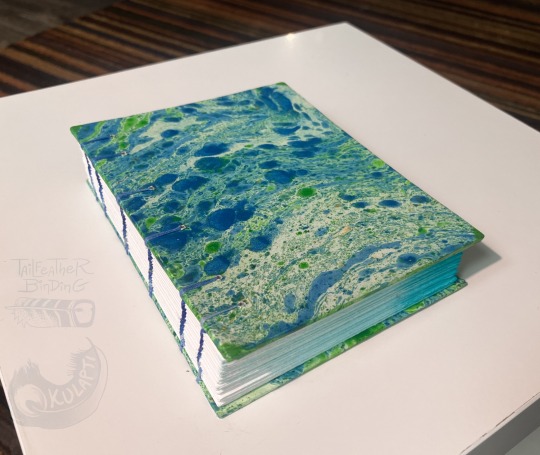
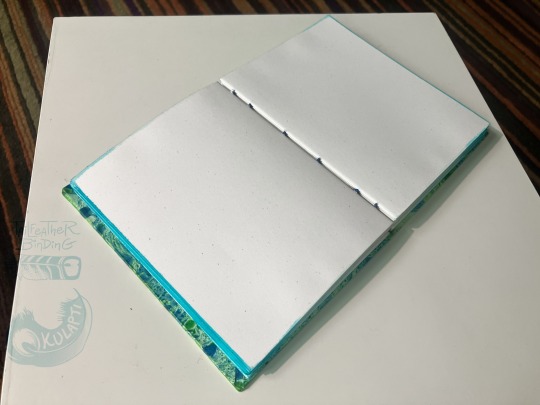
Marine-themed handmade journal, Feb 2024.
I'm very pleased with how the coptic stitch looks with embroidery thread to create that gradient look! I'll definitely be doing that again! Funny how much easier this stitch seems now compared to my first time doing it. The turquoise fore-edge is Diamine tropical shimmer ink, which I would like to try again on sanded edges to see how sparkly I can get it.
#my art#bookbinding#artists on tumblr#handmade books#coptic stitch#made this during binderary! couldn't post the results during my social media fast so I have several books to post now ^^#binderary2024#described#journal#tailfeather binding
29 notes
·
View notes
Photo

quick doodle of my oc, haru! I’ve changed her character quite a bit recently
#i transed her gender#my art#she's supposed to be from Fantasy Egypt#and i was looking for ancient egyptian or coptic names when i needed to find a name for her#and some pdf i found listed vocabulary in old egyptian and said that HARU means falcon#and i was like oh cool that's a name#now months and months later i tried to fact-check this. and i did not find that pdf again#but the hieroglyph for horus (also called haru or hor) is indeed a falcon#i kept the name because i associated it with the character so deeply at that point. ✨ETYMOLOGY✨
386 notes
·
View notes
Text

dolphin, copy of a coptic textile (IVth century AD)
32 notes
·
View notes
Text
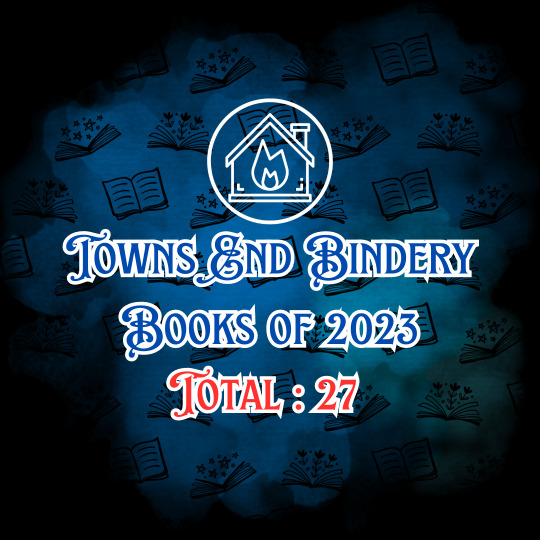
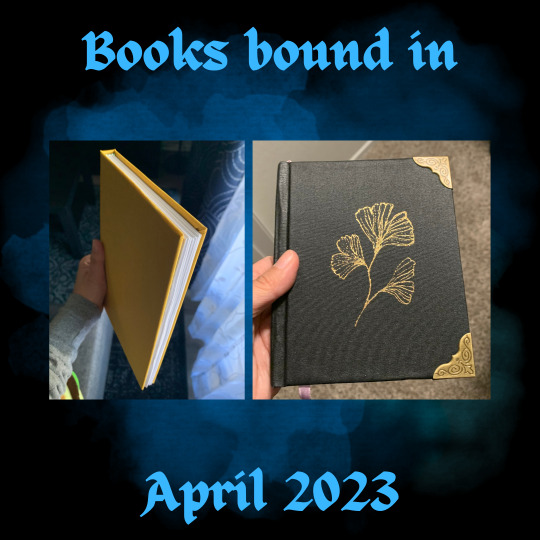

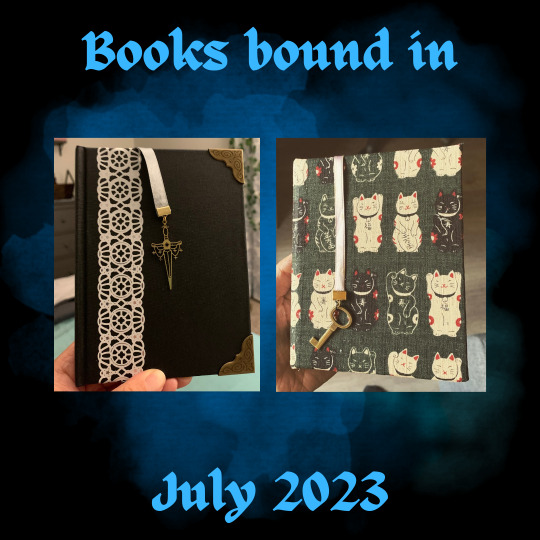


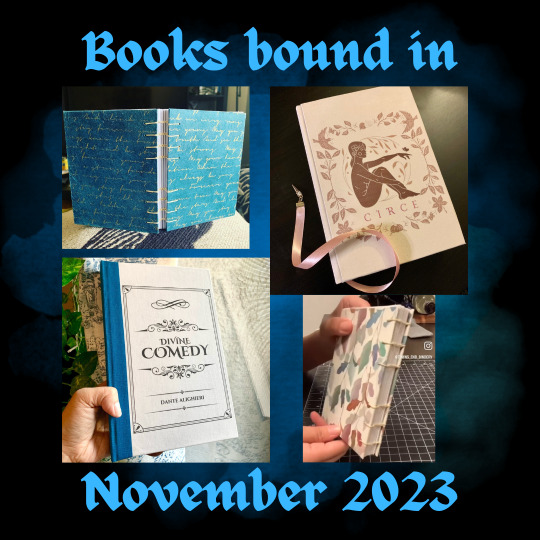
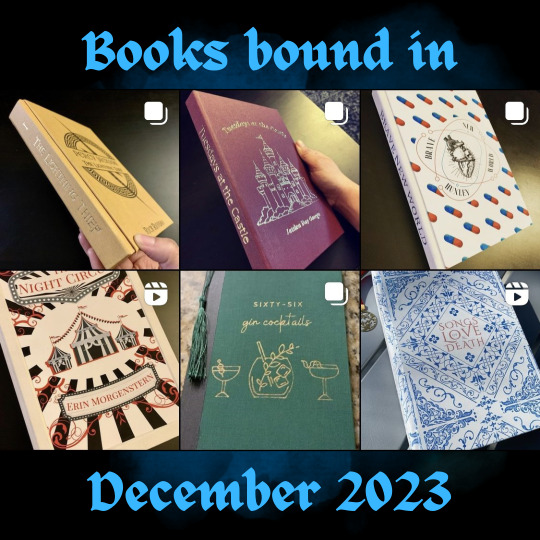
Books I bound in 2023
📚
(Or at least the ones I remembered to take pictures of)
TOTAL books bound: 27 books
STATS:
Blank journals: 8
Coptic stitch: 2
Square back bradel: 15
Rounded spine: 2
3-piece bradel: 4
Really tiny books: 4
Letter Quarto: 6
Letter Folio: 9
My own typeset: 7
Other people’s typesets: 5
Rebinds: 7
I can see my own growth when comparing my latest books with the first few I made in the spring. It's pretty amazing to see.
#bookbinding#a year in review#2023 recap#handmade book#hand made book#hand bound book#handbound book#journal#rebind#tiny books#coptic binding#arts and crafts#fanfic binding#fanfic bookbinding#ficbinding#book art#towns end bindery#townsendbindery
26 notes
·
View notes
Text
hey. I finished my sketchbook. look :)
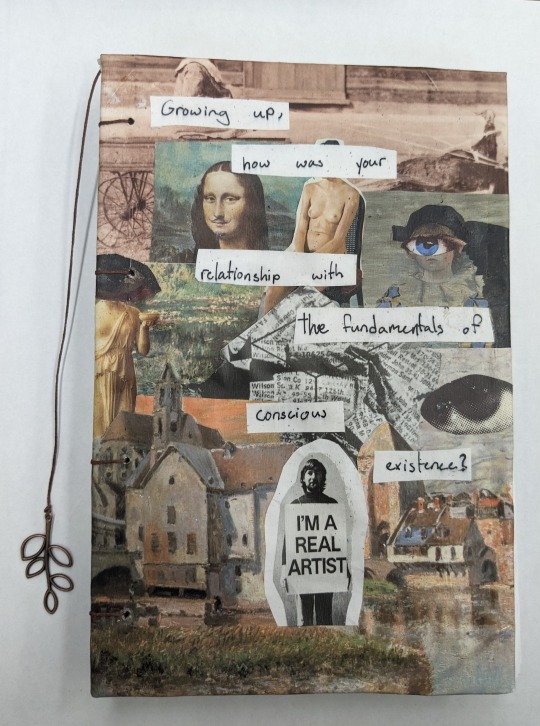


#im actually soooo happy with how it came out esp ths Little page designs#its a coptic stitch book btw#suuper fun to sew imo#aspen's silly goofy doodles#blackboxwarrior#will wood#van gogh#art#bookbinding
28 notes
·
View notes
Text
Coptic Jewelry: broad collars
This is not a common example of jewelry in Coptic art or among material culture, but some depictions exist. These overlap with Byzantine imperial superhumerals and other design elements to a degree, but not entirely. For the purposes of this post, a broad collar is a necklace worn high on the chest that encircles the neck, designed to be of a width noticeably greater than that of a strand necklace. Commonly these may have beads or pendants on their bottom edge (true of both these and the Pharaonic broad collar).
I have no opinion on if these are an evolution of the Pharaonic broad collar, as I have no evidence for or against it. It is certainly possible, and I am curious as to where exactly the Byzantines got the superhumeral from (with Egypt potentially being an origin, as well as the cloud collar of East Asia. I consider the latter somewhat unlikely however, as the cloud collar was adopted in Persia and Turkey centuries later. Visually the styles are more strongly related to the cloud collar than the superhumeral and cloud collar- the aesthetic differences between the latter imply a degree of iteration that doesn't quite make sense given the trade routes and what I know of the material cultures of the trade intermediaries).

This gold one set with gems was reportedly found in Assuit, and has strong Byzantine artistic influences- it is thought the jewelry in the hoard it was part of was owned by someone with ties to the imperial court. It was made some time in the 3rd to 6th centuries AD, and probably hidden in the 7th century, never to be recovered by its owner.
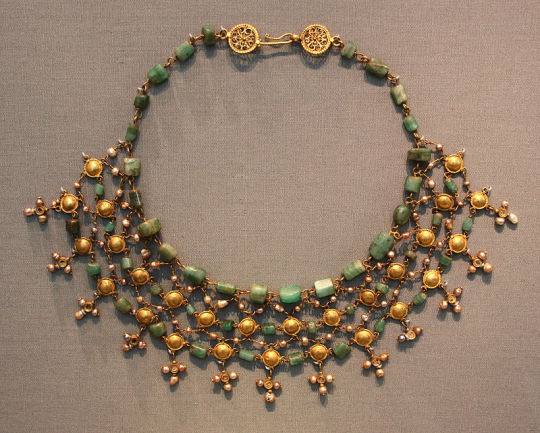
This example was found along with the preceding one, and bears some resemblance to the modern bead net necklaces found in various parts of the world, including the bogma found in Egypt in Bahariya. The design elements here were present in Egypt for several centuries by the time the necklace was put in its eventual findspot.

This carved wood door is currently in the Brooklyn Museum, where it's dated to the 7th-11th century. The figure wears, among other things, a very large necklace of the type I defined. Interestingly, the necklace looks like it has a blue tinge- a common color for the Pharaonic broad collar was blue or turquoise, from faience beads. Coptic artifacts made of faience exist up until the 4th century, but are fairly uncommon compared to earlier periods. Potentially, I think her necklace could have been based on a depiction of a Pharaonic broad collar from a statue or temple- it is known Copts used the structure of temples into Christianization, sometimes carving over the walls or defacing pagan symbols. It's possible the artist saw a partial carving with remaining pigment and felt inspired. It is also possible this style of necklace was one worn at the time the door was made.




In addition to this, occasionally Coptic textiles depict necklaces that could be of the same style. Generally it is difficult to satisfactorily classify these necklaces as such due to the artistic limitations and stylistic choices- some may have been based on chokers, or jeweled decorative bands on the necklines of tunics.
Artifacts referenced:
https://colorsandstones.eu/2022/06/30/the-asyut-treasure-segmented-necklace-d-b/ & https://commons.m.wikimedia.org/wiki/Category:Asyut_Treasure- The Assiut treasure
https://www.brooklynmuseum.org/opencollection/objects/29386- door
https://art.rmngp.fr/fr/library/artworks/bande-decorative-dionysos-et-d-ariane_tapisserie-technique_laine-textile - textile bust of Ariadne
https://www.doaks.org/resources/textiles/catalogue/BZ.1929.1 - Hanging with Hestia Polyolbus
37 notes
·
View notes
Text

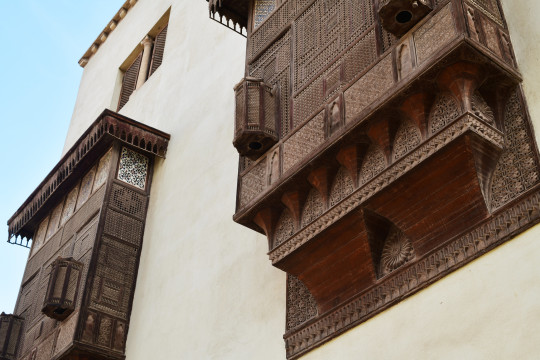



Coptic Cairo (2) (3) (4) (5) by Panegyrics of Granovetter
5 notes
·
View notes
Text
Egyptian Gods names in bohairic coptic
Ra : ⲣⲏ (Rē)
Horus: ϩⲱⲣ (hōr)
Osiris: ⲟⲩⲥⲓⲣⲓ (ousīri)
Bastet: ⲟⲩⲃⲁⲥϯ (oubasti)
Amun: ⲁⲙⲟⲩⲛ (amoun)
Thoth: ⲑⲱⲟⲩⲧ (Tʰ��wt)
Sobek: ⲥⲟⲩⲕ (souk)
Sekhmet: ⲥⲁϧⲙⲓ (Sakhmi)
Khepri: ϣⲱⲡⲓ (shōpi)
Anubis: ⲁⲛⲟⲩⲡ (anoup)
Isis: ⲏⲥⲉ (ēse)
Ptah: ⲡⲧⲁϩ (ptah)
Hathor: ϩⲁⲑⲱⲣ (hatʰōr)
Atum: ⲁⲧⲟⲩⲙ (atoum)
Nut: ⲛⲉ (ne)
Maat: ⲙⲉⲓ (mei)
Taweret: ⲑⲟⲩⲏⲣⲓ (Tʰwēri)
Ah: ⲓⲟϩ (yoh)
Aten: ⲓⲱⲓⲧ (yōit)
Geb: ⲕⲏⲃ (kēb)
Khonsu: ϣⲟⲛⲥ (shons)
#coptic#egypt#archeology#kemet#ⲭⲏⲙⲓ#ancient egypt#egyptian#egyptian mythology#pharaonic art#pharaoh#africa#coptic language#art#languages#north africa#ancient languages#coptic art#egyptian language#history#kumat
179 notes
·
View notes
Text

exposed spine sketchbook by Talula Merriwether
73 notes
·
View notes
Text
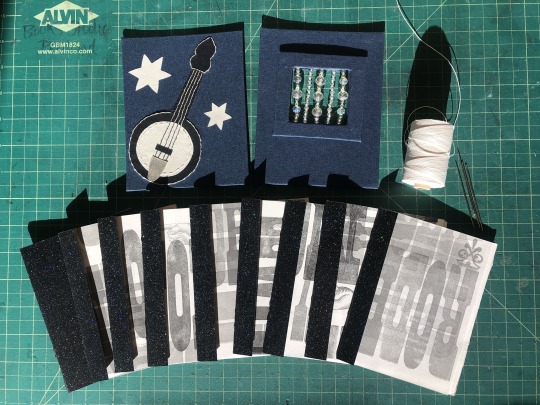

📖🪡
#i have a reason why i havent posted anything on here in a minute but it is too ridiculous to share#anyway#book#book arts#book binding#coptic stitch#art
30 notes
·
View notes
Video
LJS 102 is an illustrated Ethiopian prayer book in a fantastic coptic binding with wooden boards. Don't be fooled - this isn't that old, it was made in the early 20th century using traditional methods.
Online: bit.ly/3NBKFlO
#manuscript#not medieval#illustrated#ethiopia#ethiopian#coptic binding#rare books#rarefinds#book history#art history
275 notes
·
View notes